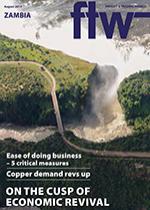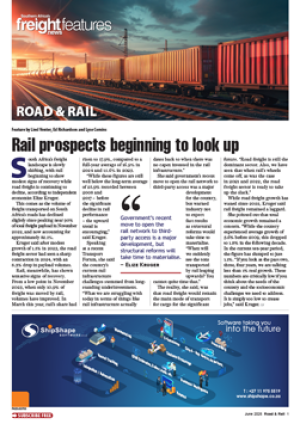The Zambian government would seem to be listening to private sector lobbying to open up rail to competition.
Zambian transport and communications minister Brian Mushimba earlier this year told parliament that “the existing railway companies have not lived up to our expectations over many years”.
As a result rail is carrying between five and 8% of the total freight being conveyed in Zambia. He said there were two “categories” of rail systems in Zambia – the 100% government-owned Zambia Railways with around 1 000 km of track, and the Tanzania/Zambia Railway Authority (Tazara) co-owned with the Government of Tanzania which covers approximately 1 900 km.
Both railway companies are operating at average speeds of around 40 km per hour for freight and maximum speeds of approximately 60 km per hour for passenger trains.
“The low speeds and vulnerability to derailments are due to the bad state of the permanent ways. The security for rail freight and passengers has also been a major concern and consequently a major factor in the erosion of the market share,” he said.
In addition to continuing to invest in the existing rail system the Zambian government has prioritised the development of five green-field railway projects.
They are a 389-km Chipata/ Petauke/Serenje link betweem Zambia and the Nacala Corridor; a 600-km Chingola/Solwezi/Jimbe link to the Lobito Corridor in Angola; a 195-km Nseluka/Mpulungu link to the Great Lakes region; a 200-km Livingstone/Kazungula/Sesheke link to Walvis Bay in Namibia; and a separate 800-km Solwezi/ Kaoma/ Sesheke Rail project link between Zambia and Walvis Bay. These will be funded through public private partnerships.
Mines will also be connected to the network. In order to improve efficiency the minister said government intended to create a national railway development authority meant to separate maintenance and development of railway infrastructure and permanent way from operations.
The agency will also be the regulator of the rail subsector and will be responsible for all maintenance, rehabilitation and development of railway infrastructure.
This would provide the opportunity for private sector investment in rolling stock. Rail will be made more viable by imposing a 30% quota system on all mining and other bulk products such as lime, cement, sugar, fertiliser and fuel.
INSERT
5-8%
Rail’s share of total freight

